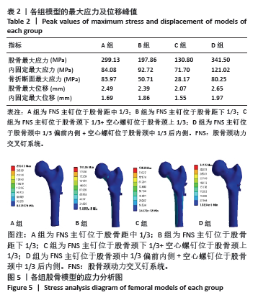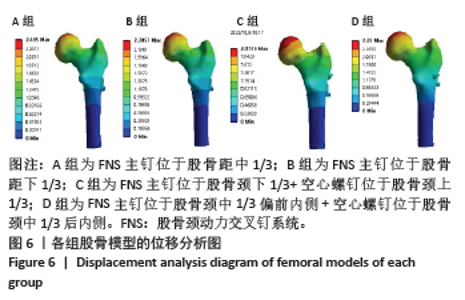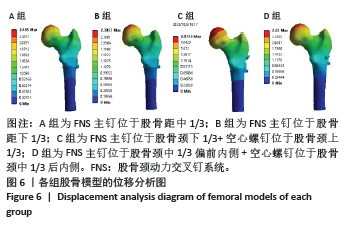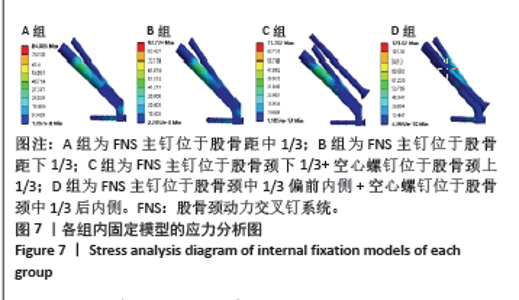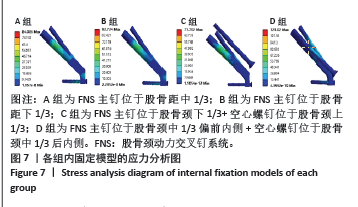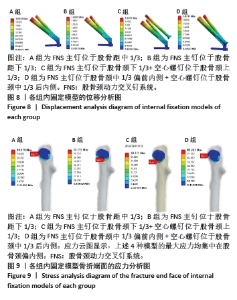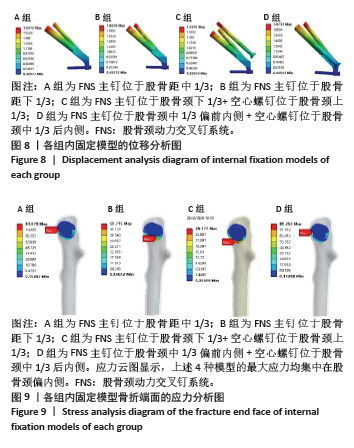[1] 葛双雷, 王雪飞, 胡国东, 等. 股骨颈动力交叉钉系统治疗中青年PauwelsⅡ型股骨颈骨折临床价值[J]. 中国骨与关节杂志,2022, 11(4):255-260.
[2] ZHAO F, GUO L, WANG X, et al. Analysis on risk factors for neck shortening after internal fixation for Pauwels II femoral neck fracture in young patients. Eur J Med Res. 2021;26(1):59.
[3] LIPORACE F, GAINES R, COLLINGE C, et al. Results of internal fixation of Pauwels type-3 vertical femoral neck fractures. J Bone Joint Surg Am. 2008;90(8):1654-1659.
[4] YE Y, CHEN K, TIAN K, et al. Medial buttress plate augmentation of cannulated screw fixation in vertically unstable femoral neck fractures: Surgical technique and preliminary results. Injury. 2017;48(10):2189-2193.
[5] HUANG S, ZHANG Y, ZHANG X, et al. Comparison of femoral neck system and three cannulated cancellous screws in the treatment of vertical femoral neck fractures: clinical observation and finite element analysis. Biomed Eng Online. 2023;22(1):20.
[6] LI J, ZHAO Z, YIN P, et al. Comparison of three different internal fixation implants in treatment of femoral neck fracture-a finite element analysis. J Orthop Surg Res. 2019;14(1):76.
[7] SCHOPPER C, ZDERIC I, MENZE J, et al. Higher stability and more predictive fixation with the Femoral Neck System versus Hansson Pins in femoral neck fractures Pauwels II. J Orthop Translat. 2020;24:88-95.
[8] ZHOU XQ, LI ZQ, XU RJ, et al. Comparison of Early Clinical Results for Femoral Neck System and Cannulated Screws in the Treatment of Unstable Femoral Neck Fractures. Orthop Surg. 2021;13(6):1802-1809.
[9] 葛双雷, 王雪飞, 刘亮, 等. 股骨颈动力交叉钉系统联合支撑空心螺钉对伴后内侧粉碎的中青年股骨颈骨折的疗效研究[J]. 中华医学杂志,2023,103(21):1631-1637.
[10] STOFFEL K, ZDERIC I, GRAS F, et al. Biomechanical Evaluation of the Femoral Neck System in Unstable Pauwels III Femoral Neck Fractures: A Comparison with the Dynamic Hip Screw and Cannulated Screws. J Orthop Trauma. 2017;31(3):131-137.
[11] 庄华烽, 李毅中, 林金矿, 等. 脆性股骨颈骨折患者股骨颈骨密度及结构的变化[J]. 中华老年医学杂志,2014,33(3):282-285.
[12] 张乾龙, 买合木提·亚库甫, 宋晨辉, 等. 骨水泥分布位置与含量对股骨反转子间骨折应力、位移影响的有限元分析[J]. 中国组织工程研究,2024,28(3):336-340.
[13] LI J, WANG M, LI L, et al. Finite element analysis of different configurations of fully threaded cannulated screw in the treatment of unstable femoral neck fractures. J Orthop Surg Res. 2018;13(1):272.
[14] GARDNER MP, CHONG AC, POLLOCK AG, et al. Mechanical evaluation of large-size fourth-generation composite femur and tibia models. Ann Biomed Eng. 2010;38(3):613-620.
[15] HEINER AD. Structural properties of fourth-generation composite femurs and tibias. J Biomech. 2008;41(15):3282-3284.
[16] MA L, ZHOU Y, ZHANG Y, et al. Biomechanical evaluation with finite element analysis of the reconstruction of femoral tumor defects by using a double-barrel free vascularized fibular graft combined with a locking plate. Int J Clin Exp Med, 2014;7(9):2425-2434.
[17] ZHOU L, LIN J, HUANG A, et al. Modified cannulated screw fixation in the treatment of Pauwels type III femoral neck fractures: A biomechanical study. Clin Biomech (Bristol, Avon). 2020;74:103-110.
[18] 陈纪宝, 盈梅, 周磊, 等. 股骨颈动力交叉钉系统主钉位置对股骨颈骨折稳定性影响的有限元分析[J]. 临床骨科杂志,2023,26(5): 739-744.
[19] ZHENG L, CHEN X, ZHENG Y, et al. Cement augmentation of the proximal femoral nail antirotation for the treatment of two intertrochanteric fractures - a comparative finite element study. BMC Musculoskelet Disord. 2021;22(1):1010.
[20] CUI Y, XING W, PAN Z, et al. Characterization of novel intramedullary nailing method for treating femoral shaft fracture through finite element analysis. Exp Ther Med. 2020;20(2):748-753.
[21] WANG J, MA JX, LU B, et al. Comparative finite element analysis of three implants fixing stable and unstable subtrochanteric femoral fractures: Proximal Femoral Nail Antirotation (PFNA), Proximal Femoral Locking Plate (PFLP), and Reverse Less Invasive Stabilization System (LISS). Orthop Traumatol Surg Res. 2020;106(1):95-101.
[22] LIN JC, WU CC, LO C, et al. Mortality and complications of hip fracture in young adults: a nationwide population-based cohort study. BMC Musculoskelet Disord. 2014;15:362.
[23] STOCKTON DJ, O’HARA LM, O’HARA NN, et al. High rate of reoperation and conversion to total hip arthroplasty after internal fixation of young femoral neck fractures: a population-based study of 796 patients. Acta Orthop. 2019;90(1):21-25.
[24] SLOBOGEAN GP, SPRAGUE S A, SCOTT T, et al. Complications following young femoral neck fractures. Injury. 2015;46(3):484-491.
[25] 刘佳杰, 林东泽, 陈培生, 等. 股骨颈动力交叉钉系统与空心拉力螺钉治疗中青年股骨颈骨折的疗效比较[J]. 中华创伤杂志,2023, 39(8):721-729.
[26] 杨通池, 胡居正, 王仁崇, 等. 股骨颈系统治疗成人PauwelsⅢ型股骨颈骨折的有限元分析[J]. 中国组织工程研究,2022,26(36): 5775-5780.
[27] 周博, 尹莲平. 股骨颈系统对PauwelsⅡ型股骨颈骨折患者的影响[J]. 中外医学研究,2023,21(8):44-47.
[28] PANTELI M, RODHAM P, GIANNOUDIS PV. Biomechanical rationale for implant choices in femoral neck fracture fixation in the non-elderly. Injury. 2015;46(3):445-452.
[29] BONNAIRE FA, WEBER AT. Analysis of fracture gap changes, dynamic and static stability of different osteosynthetic procedures in the femoral neck. Injury. 2002;33 Suppl 3:C24-32.
[30] 曲国胜, 刘建华, 马英, 等. 切开复位DHS联合抗旋螺钉固定治疗青壮年股骨颈PauwelsⅢ型骨折[J]. 中国医药导刊,2011,13(3): 411-412.
[31] 姬帅, 马腾, 王谦, 等. 股骨颈动力交叉钉系统固定PauwelsⅢ型股骨颈骨折头钉不同置入位置的有限元分析[J]. 中国骨与关节杂志,2023,12(3):210-215.
[32] PAPINI M, ZDERO R, SCHEMITSCH EH, et al. The biomechanics of human femurs in axial and torsional loading: comparison of finite element analysis, human cadaveric femurs, and synthetic femurs. J Biomech Eng. 2007;129(1):12-19.
|
